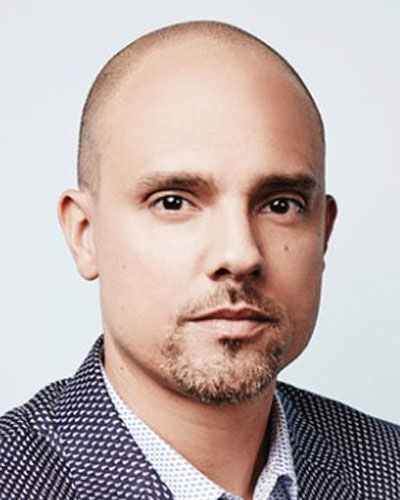
All About Series Formats
Writers, reps, and execs discuss the industry’s increasingly prevalent series formats, what makes them most effective, and how they can impact the decision to buy a project.
Written by Aaron Wiener
(7/8/2022)
 Keshni Kashyap
Keshni KashyapOn June 14, the WGAW Writers Education Committee and moderator/writer Keshni Kashyap (Special) gathered a panel of guest speakers to answer the question, “What is a series format?” Panelists—including Teenage Bounty Hunters creator Kathleen Jordan, Hand of God creator Ben Watkins, A&E Vice President of Creative Affairs Tom Lerner, manager/partner of Haven Entertainment Rachel Miller, and WGAW Senior Director of Contracts Laurie Espinosa—compared notes on when, why, and how formats are used, and discussed the ways our Guild views and enforces series format writing and compensation.
 Tom Lerner
Tom LernerA&E’s Tom Lerner explained that much like a pilot script, the format is a sales tool, and once a series is picked up, a show will change as it moves through production. Each TV series format is unique, but all should communicate a show’s idea in a clear and concise way, and include the world, characters, and tone. Often a format places an emphasis on season one and may include short episodic breakdowns.
Haven Entertainment’s Rachel Miller explained that a format can be “the thing that helps you get a green light,” and can only give executives more justification to buy a show that will cost millions of dollars in development and production.
Lerner added that a format can be harder to write than a bible because it’s shorter, but that it still must convey so much. If it can be done in a clean and efficient way, it can make an executive’s life easier to promote a show in house.
 Rachel Miller
Rachel MillerEspinosa shared the Guild’s official language for a series format: “as to a serial or episodic series, such format sets forth the framework within which the central running characters will operate and which framework is intended to be repeated in each episode; the setting, theme, premise, or general storyline of the proposed serial or episodic series; and the central running characters which are distinct and identifiable, including detailed characterizations and the interplay of such characters. It may also include one or more suggested storylines for individual episodes.”
Many writers have expressed frustration around creating formats. They can be a lot of extra work and companies sometimes try to pressure writers to write them for free. (If you are asked to do this, contact the Contracts Department immediately!) Also, they can be used as a kind of “CliffsNotes” for executives who may not have read a show’s pilot. Panelists emphasized the importance of putting the thought and the work into creating a format, but not being too precious about any one detail, as many format details may not actually end up in the show that’s ultimately produced.
 Kathleen Jordan
Kathleen JordanJordan urged writers to include jokes and ideas from earlier pitches that may have killed in the room, explaining formats should be a place for all the writer’s best material. She tries to start her formats with her own personal entry point into the story, and always aims to include why the show needs to be made now.
Watkins emphasized the importance of keeping a reader’s interest; he never takes attention span for granted and always focuses on how each section of a format ends. He also likes to tee up each section so a reader can see it coming.
Panelists also discussed how some formats may be all written, and some may include visuals. If a writer utilizes visuals and makes a format more of a multimedia presentation, the studio should pay costs. Jordan added that at the format stage, discussions can sometimes get focused on casting ideas, especially for high-level talent. She’ll sometimes add three totally different ideas for casting under each character name in her document.
Miller emphasized how important it is for writers to show their value as the showrunner in the format, providing a clear and memorable series vision and showing executives they have their back. Watkins remembered a time when one of his series formats solidified his leadership role on a show. Espinosa explained that a format is ultimately what gives a writer a “created by” credit, which continues on through every episode of a TV series.
 Ben Watkins
Ben WatkinsLerner recalled a format he once read which used character arcs to tell the story. Before he knew it, he’d read an entire season overview as told by the main characters. That format stuck with him and illustrated the power of creativity and risk-taking in crafting these documents.
Watkins explained that a writer is smart to incorporate material from a pitch and pilot instead of starting fresh with each new document. He added that crafting formats can only help a writer in learning how to sell their projects and to see shows beyond their first episodes.
Espinosa reminded attendees that the WGA minimum rate is $12,600 for a series format document, with additional payments for each rewrite. Jordan said two weeks was a reasonable amount of time to write a format.
Panelists discussed the importance of writers communicating with reps, producing partners, and the Guild about their expectations, including the financial details and compensation for series formats. Jordan reminded everyone that a format order is often an encouraging step in selling a show, and urged writers to open their hearts and let their excitement for their story drive them when creating the format for their TV series.
Aaron Wiener is a WGAW member and part of the WGAW’s Writers Education Committee (WEC).
